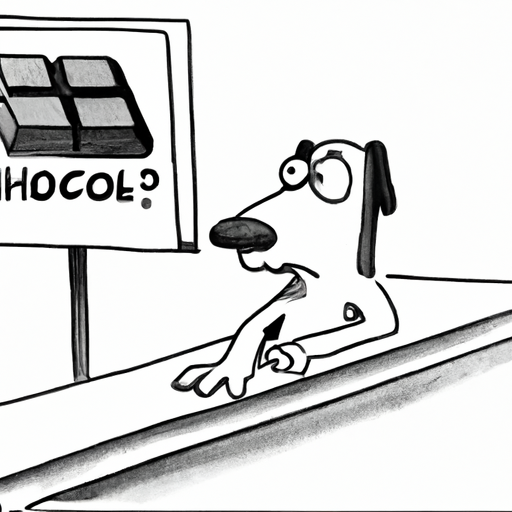Dear Caregivers,
As a devoted pet parent, you always want what’s best for your four-legged family members. But sometimes, what’s delicious to you can be dangerous to them. One such food is chocolate, a sweet treat that can cause serious problems for your pup. Let’s delve into why this is the case.
Understanding Theobromine
Firstly, let’s talk about a substance known as ‘Theobromine’.
Theobromine is a bitter alkaloid found in cocoa, which is a key ingredient in most chocolate. It’s similar to caffeine and is part of what gives chocolate its unique taste. While humans can metabolize theobromine relatively quickly, dogs process it much more slowly, allowing it to build up to toxic levels in their system.
| Ingredient | Theobromine Levels |
|---|---|
| White Chocolate | Minimal |
| Milk Chocolate | Moderate |
| Dark Chocolate | High |
| Cocoa Powder | Very High |
The Dangers of Theobromine
Secondly, let’s explore what happens when a dog ingests theobromine.
-
Heart Problems: The theobromine in chocolate can stimulate the heart, leading to a rapid or irregular heartbeat. This can result in a variety of symptoms, from restlessness to life-threatening heart attacks.
-
Nervous System Issues: Theobromine can also affect the central nervous system. Symptoms can range from tremors and seizures to, in severe cases, death.
-
Digestive Upset: Many dogs will experience vomiting or diarrhea after eating chocolate. This is your pet’s body attempting to rid itself of the toxin.
Recognizing Chocolate Toxicity
Now that we’ve discussed what theobromine does, let’s discuss how to recognize if your dog has ingested a harmful amount of chocolate.
- Restlessness
- Excessive panting
- Vomiting
- Diarrhea
- Increased urination
- Rapid or irregular heartbeat
- Seizures
What to Do If Your Dog Eats Chocolate
If you discover that your dog has eaten chocolate, there are a few steps you should take immediately:
- Don’t Panic: Panicking can make the situation worse, as your dog may pick up on your stress.
- Remove Any Remaining Chocolate: If there’s any chocolate left, remove it from your dog’s reach.
- Call Your Vet: Contact your vet or a pet poison control center. They can advise you on the next steps.
- Monitor Your Dog: Keep a close eye on your dog for any signs of chocolate toxicity.
Frequently Asked Questions
Lastly, let’s answer some commonly asked questions about dogs and chocolate.
Q: Can a small amount of chocolate kill a dog?
A: It depends on the type of chocolate and the size of the dog. Even small amounts can be dangerous, so it’s best to avoid giving your dog chocolate altogether.
Q: What if my dog ate a chocolate chip cookie?
A: One cookie may not harm a large dog, but it might cause problems for a smaller breed. Call your vet to be safe.
Q: How long after eating chocolate will a dog get sick?
A: Symptoms of chocolate poisoning can appear within 6 to 12 hours.
Remember, when it comes to your furry friends and chocolate, it’s always better to be safe than sorry. Keep your sweets securely stored and out of paws’ reach.



